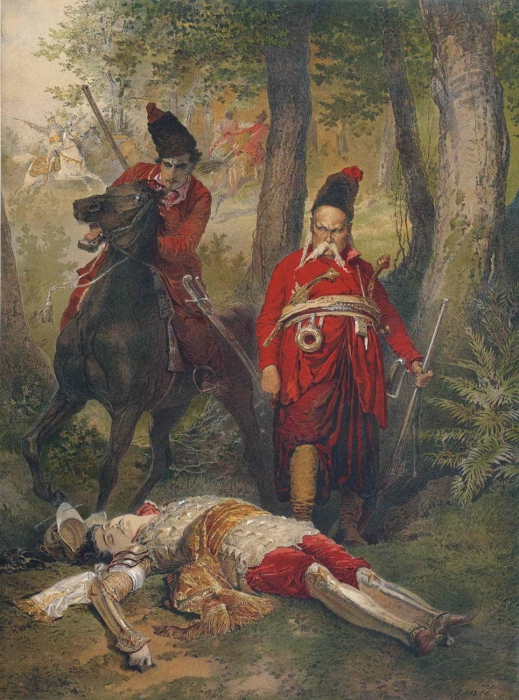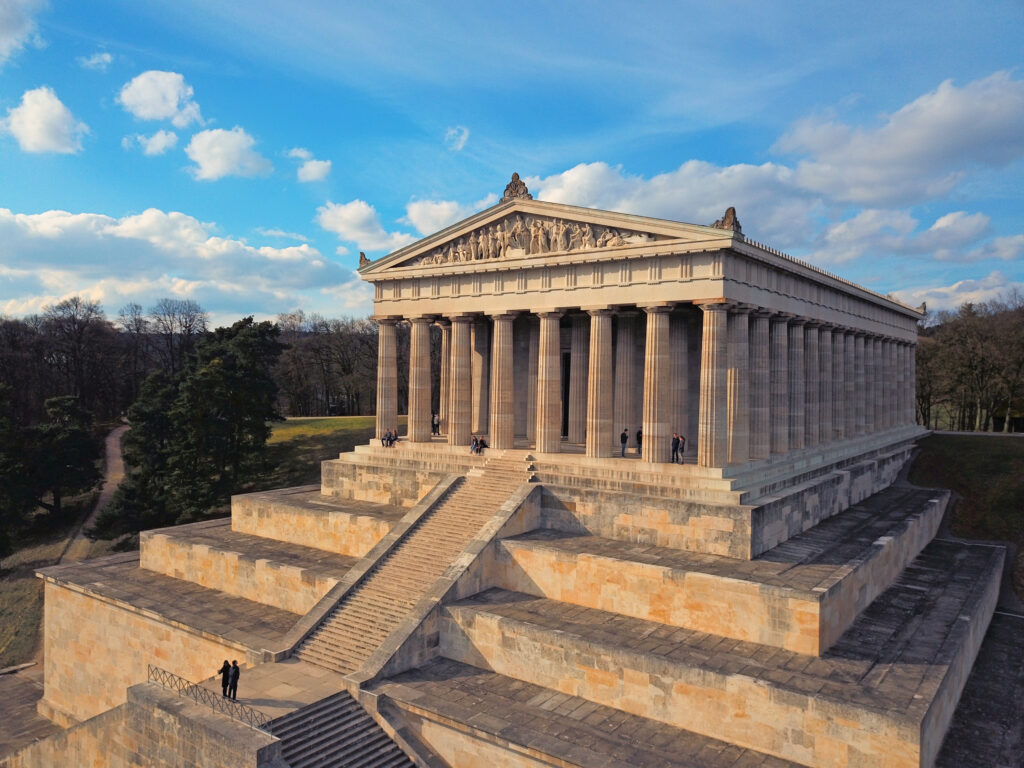
Taras Bulba by M.Zichy
ENDNOTES, October 2018
In this edition: Janacek from Decca, reviewed by Stuart Millson;
Bruckner, Wagner & Schoenberg, Royal Festival Hall, Southbank Centre, 30thSeptember 2018, Philharmonia Orchestra conducted by Esa-Pekka Salonen, reviewed by Leslie Jones
The late-19th/early 20th-century Moravian-born Czech composer, Leos Janacek (1854-1928) was a phenomenon in music. He seemed to follow no school or particular style; he wrote no symphonies, although he excelled in opera –Jenůfa, The Cunning Little Vixen, The Excursions of Mr. Brouček – which took the hero to the moon. He saw himself as an artist in a new age for his people and homeland, and yet his work resounded with echoes of a noble past from lost centuries.
In a newly-issued recording from Decca – a further tribute to the last years of maestro and Czech music champion, Jiří Bělohlávek – three major works and one lesser-known offering of Janacek are presented: the 1926 Glagolitic Mass (Glagolitic – an ancient script of the ancestral Czech race); the rhapsody, Taras Bulba, a tense, three-movement symphonic poem about a Cossack warlord; and the life-affirming orchestral sequence – famous for its blazing massed-brass, the Sinfonietta. The last work on the disc – The Fiddler’s Child– shows how close Janacek was to the folkloric tradition of his native lands – and this is a work which shows some connection with the world of Antonin Dvorak, famous for his own symphonic pieces – such as The Noonday Witch– which came from local tales.
From the moment the CD begins, with the opening of the Glagolitic Mass, the listener, even if unfamiliar with the composer, can tell that this is a recording of immense force, sonic depth and brilliant engineering quality. As if hewn from the stone of a cathedral, castle or mountain, the opening brass fanfares – reminiscent of the fanfares in the Sinfonietta – achieve a dark, yet massive resonance. The recording venue – the grand, 19th-century Rudolfinum in Prague – seems made for this music: the hall achieving an almost perfect synthesis of air, echo and reverberation – yet allowing every texture and tiny detail to be heard in supreme clarity. For example, in the fourth cue on the CD, the 12-minute-long Credo section, the change of mood – from the austere declamations of the Introduction, to a gentle, heavenly vision (almost like Wagner’s flower garden in Parsifal, or the fragrant, innocent beginning and ending in Mahler’s Fourth Symphony) just floats from the loudspeakers – and sounds even more enriching, expansive and effortless via headphones.
Such gorgeous, lighter textures, are one thing: but for this reviewer, it is the power of the harder high-drama in the three-movement Taras Bulba which makes this disc such a pleasure. The rhapsody is characterised by its melancholic introduction – a sense of empty landscapes or, perhaps, dead warriors – with a strange, brooding, soft organ part moving like a ghost across the orchestra. Complicated ideas turn the course of the music into completely unpredicted paths – leading to a great gathering of breath and majesty for the final chords. After an initial, mind-clearing, silvery reverie from the harp (again – a living presence on this multi-layered recording) brighter folk-like themes appear in the second movement. Violins emulate what sounds like a typical village or camp-fire celebration; but it is the movement’s sharp opening which rouses everything to life – a sense of sunlight flashing and reflecting from armour, or water or through trees.
The final movement – The Prophecy and Death of Taras Bulba – offers some of the finest playing on this disc; the Czech Philharmonic on blazing form, particularly its solid wall of brass – and all sections converging for the spine-tingling, overwhelming acceleration at the very heart of the movement. And – if all that had gone before was not enough, that very section then immediately leads into a pounding coda for timpani alone: the dry, sharp kettle-drum sound of the Czech ensemble almost terrifying in its stroke-after-stroke impact. For those who remember the Czech-made Supraphon records from years ago, the era of conductors Karel Ančerl and Vaclav Neumann, the new recording, especially in the timpani part, is a reminder of the closely-defined, hard-edged quality of that Cold War-period label and style.
Possibly the most famous item on the new Decca Janacek collection is, on the face of it, the Sinfonietta, (subtitled “Military Sinfonietta”) which – like the Mass – dates from 1926. The piece employs large brass forces, and was originally dedicated to an organisation, the Czechoslovak Army and an event, the Sokol Gymnastic Festival. The hypnotic, repeated drive of the opening fanfares return in the last movement (the title of which is “The Town Hall”) and create – as in Taras Bulba – a stunning impact. Yet a peculiar atmosphere exists in the middle movements, which seem to be a dream sequence – a feeling accentuated in the Moderato third movement, “The Queen’s Monastery”. Here, in this stillness and wonder, the listener is transported (just like Janacek’s operatic hero, Mr. Brouček) to a moonlit, unearthly place – with a lonely woodwind passage drawing us along ruined battlements or into a night-forest of folk-tales.
A truly memorable production in every way, and yet another tribute from Decca to – surely – one of the great European conductors of our age – the much-missed Jiří Bělohlávek.
Janacek, orchestral works and Glagolitic Mass. Decca: 483 4080
Stuart Millson is the Classical Music Editor of The Quarterly Review
—————————————-
Concert, Royal Festival Hall;
Richard Wagner, Tristan und Isolde (1857-59), Prelude and ‘Liebestod’
All of the works in this concert were cleverly linked but as Ian Skelly remarked during Radio 3’s subsequent broadcast (Tuesday 2nd October), Wagner was “the ring that binds them all”. Skelly also referred to the Tristan chord at the opening of the Prelude. The significance of the Tristan chord, it has been said, is “its move away from traditional tonal harmony, and even toward atonality”. It is left “unresolved but hanging poised to explore new harmonic ground”, according to pianist Iain Farrington.
The medieval romance by Gottfried von Strassburg upon which Wagner’s opera was based tells of illicit love. At the time of its composition, Wagner was infatuated with Mathilde Wesendonck, another man’s wife. Their relationship did irreparable damage to Wagner’s own marriage. Tristan und Isolde, in Wagner’s own words, is “…a memorial to this loveliest of all dreams…love…” ‘Liebestod’ means literally ‘Love Death’, or ‘transfiguration dans l’amour’.
Arnold Schoenberg, Verklärte Nacht (Transfigured Night) (1899)
Schoenberg’s beautiful, early tone poem Verklärte Nacht was composed for string orchestra. There are echoes of Wagner as well as of Brahms and Bruckner. Inspired by the composer’s love for Mathilde Zemlinsky, his future wife, it was based on a poem from the collection Weib und Welt (Woman and world), written by Richard Dehmel and published in 1896. In the poem, a woman admits to her lover that “I’m carrying a child, and not yours, I walk in sin beside you”.
The opening passage is very dark. The emotional turmoil of a couple in crisis and the struggle of the man to forgive his partner were powerfully evoked by the players of the Philharmonia. Ultimately, the man welcomes the unborn child “as if it were mine” and despair and conflict give way to joy and serenity. As in the Prelude and ‘Liebestod’, there is tension but finally resolution. The upbeat ending contains an exquisite, shimmering passage. Salonen’s string forces did it full justice.
The audience responded to the performance of this piece with warm applause. Richard Dehmel, who attended its first outing in 1896, was no less enthralled.
Anton Bruckner, Symphony No. 7 in E (1883, rev. 1885)
This was Bruckner’s breakthrough as symphonist. As Joanna Wyld points out in her programme notes, when Bruckner composed the adagio, he was sad because “The thought had crossed my mind that before long the Master [Wagner] would die”. The coda, which features four “Wagner tubas”, was composed as “funeral music for the master”. This second movement has the dubious distinction of being played when Hitler consecrated a bust of the composer at Regensburg’s Walhalla temple. It was also played before German radio announced the defeat at Stalingrad and, subsequently, Hitler’s death.
Commenting on Bruckner’s idiosyncratic, frankly repetitive style, Esa-Pekka Salonen, the articulate and knowledgeable Principal Conductor and Artistic Advisor of the Philharmonia Orchestra, remarked that listening to the 7th Symphony is like “watching different aspects of a vast building”. Did he mean Nazi mega-structure?

Walhalla Memorial, Regensberg
Dr Leslie Jones is Editor of QR











Hitler was fond of Bruckner’s music.
Bruckner was fond of teenage girls.